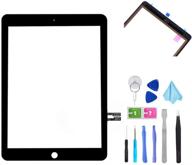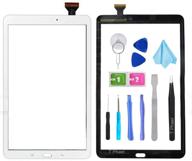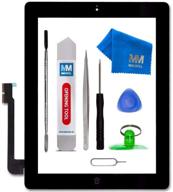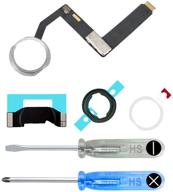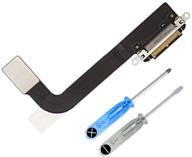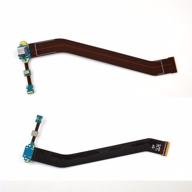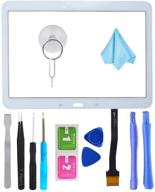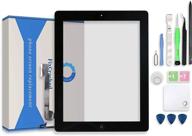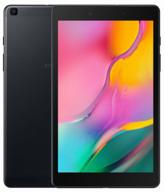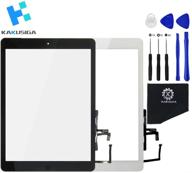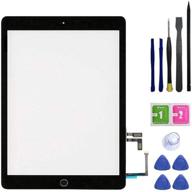Top products in 💻 Tablet Digitizers
What to Consider When Buying a Tablet Digitizer
When your tablet's touchscreen stops responding accurately or has dead spots, a faulty digitizer is usually the culprit. The digitizer is the layer under the glass that detects touch input. Replacing it can restore full functionality to your tablet. Here are some key considerations when choosing a replacement digitizer:
Another interesting products
Compatibility
The most important factor is compatibility with your specific tablet model. Digitizers are designed for particular models. For example, a Samsung Galaxy Tab A 10.1 digitizer will not work in an iPad Pro 11. You’ll need the exact replacement part made for your tablet.
Digitizer Technology
- Capacitive digitizers use microchip sensors to detect touch input. They offer excellent precision but cost more.
- Passive/electromagnetic digitizers use a wire mesh grid embedded in the glass. Less expensive but can be less accurate.
Similar products
Display Size
Make sure to get a digitizer matched to your exact display size - 10”, 11”, etc. Even a minor size difference will prevent proper installation and calibration.
Resolution and Image Quality
Higher resolution digitizers (2560 x 1600, for example) will maintain the crisp image quality you’re used to. Lower resolutions may look more pixelated.
Touch Sensitivity
More touch-sensitive digitizers require less pressure and respond faster to finger input. Choose a model with high sensitivity for optimal performance.
Palm Rejection
Look for a digitizer with palm rejection, which prevents accidental touch register when your palm rests on the screen as you write/draw with the stylus.
Ease of Installation
Opt for a digitizer designed for easy peel-and-stick installation. Digitizers that require full tablet disassembly are best left to repair professionals.
Doing your homework on the specs and reviews will help you select the right replacement digitizer for your tablet. Investing in a quality part from a reputable brand is highly recommended for smooth, responsive, and accurate touch performance.
Compatibility with your Tablet Model
When replacing a broken digitizer, compatibility with your exact tablet model is the most crucial factor. A digitizer designed for one tablet will not work properly in another model due to differences in size, connectors, and calibration.
Matching the Right Part Number
Each tablet model has a specific digitizer part number, usually starting with "DG" or "LCD". For example:
- iPad Pro 11" - DG-APL-IPAD-PRO-11
- Samsung Galaxy Tab S7 - DG-SS-GALAXY-TABS7
- Microsoft Surface Pro 7 - LCD-MS-SURFACE-PRO7
Carefully match the part number to ensure compatibility with your tablet's make and model. Sites like iFixit provide part number lookup tools to aid in finding the correct replacement.
Physical Dimensions
The digitizer must precisely fit the tablet's screen size and layout. Even a small difference in size can prevent proper installation.
| Tablet Model | Screen Size |
|---|---|
| iPad Mini 2019 | 7.9 inches |
| Fire HD 10 | 10.1 inches |
Measuring the visible screen area or checking your tablet's specs will provide the necessary dimensions.
Connector Type
How the digitizer connects to the LCD and logic board varies between models:
- FPC (flexible printed circuit) connector
- ZIF (zero insertion force) connector
- Adhesive strips
The replacement must have the right connector configuration to plug into your tablet's internals.
Confirming part number match, dimensions, and connector style ensures digitizer compatibility and successful repair of your tablet's touchscreen.
Digitizer Technology: Active vs. Passive
Tablet digitizers come in two main types - active and passive. The technology used affects touch accuracy, durability, cost, and overall performance.
Active Digitizers
Active digitizers use a grid of tiny integrated circuits to detect touch input on the screen. When your finger touches down, it creates a miniscule electrical charge that registers in the circuits underneath.
- More precise and sensitive to light touches
- Support pressure-sensitive stylus input for drawing/writing
- React quicker with less latency
- More expensive parts starting around $150
Examples: Wacom AES, Atmel maxTouch, Synaptics ClearPad
Passive Digitizers
Passive digitizers have a mesh of fine conductive wires embedded in the glass. Touching the screen causes a contact point in the wire grid.
- Less expensive around $100
- More prone to dead spots and inaccurate responses
- No pressure sensitivity for stylus use
- Sufficient for basic touch needs
Examples: E-Ink Pearl, ILITEK, generic brands
Digitizer Comparison
| Feature | Active Digitizer | Passive Digitizer |
|---|---|---|
| Precision | Excellent | Moderate |
| Responsiveness | Very fast | Slower |
| Palm rejection | Yes | No |
For high-performance tablets focused on artwork, note-taking, or productivity, an active digitizer is recommended. For more basic uses like media viewing and light browsing, a cheaper passive digitizer may suffice.
Resolution and Image Quality
When replacing a tablet digitizer, the resolution and resulting image quality are important factors to consider.
Native Resolution
A digitizer's native resolution matches the tablet's original screen resolution:
- iPad Pro 11" - 2388 x 1668 pixels
- Samsung Galaxy Tab S7 - 2560 x 1600 pixels
- Amazon Fire HD 8 - 1280 x 800 pixels
Higher resolutions like 2K or 4K will look sharper and crisper. Lower resolutions may seem pixelated in comparison.
Aspect Ratio
The aspect ratio is the ratio of the screen's width to its height:
- 16:10 - More landscape orientation for widescreen media
- 4:3 - Square-ish format good for portraits/reading
- 3:2 - Balanced and popular multi-use ratio
Match the replacement digitizer's aspect ratio to maintain proper display geometry and image calibration.
Color Gamut
The sRGB color gamut is standard, displaying 16.7 million colors. Wider gamuts like DCI-P3 and Adobe RGB reproduce 25-30% more colors for richer visuals.
Contrast Ratio
Higher contrast ratios of 1000:1 or 1500:1 will make blacks look deeper and whites brighter for bolder images.
While a higher resolution digitizer costs more, it maintains the crisp, vibrant image quality you expect from your tablet. Lower resolutions work but sacrifice sharpness and color depth.
Touch Sensitivity and Accuracy
A digitizer's touch sensitivity and accuracy determines how responsive and precise interaction with the tablet screen will feel.
Sensitivity
Sensitivity is measured by the minimum amount of touch pressure needed to register input:
- Higher sensitivity requires lighter touches
- Lower sensitivity needs firmer pressing to respond
More advanced active digitizers offer excellent sensitivity for natural, quick response with just a light tap or stylus stroke.
Accuracy
Accuracy refers to how close your touches are registered to the actual point of contact.
- High accuracy has little discrepancy between input and response
- Low accuracy will have an obvious offset
For precision drawing and writing apps, an accurate digitizer is a must-have.
Latency
Latency is the brief delay between touch input and on-screen response. Quick response times under 10ms provide a seamless feel.
Jitter
Jitter is small variations in touch response accuracy:
- Low jitter gives smooth straight lines when drawing
- High jitter causes noticeably jagged lines
Palm Rejection
Palm rejection prevents false touches when your hand rests on the screen as you write. Good palm rejection is critical for natural feel.
Seeking out a digitizer with high sensitivity, accuracy, low latency/jitter, and palm rejection will optimize the responsiveness of your tablet when interacting via finger or stylus.
How to use your Amazon Prime to buy Tablet Digitizers
If you have an Amazon Prime membership, it offers several perks that can save you time and money when purchasing a new digitizer for your faulty tablet screen.
Free Two-Day Shipping
Prime members enjoy free two-day shipping on millions of eligible items. This means once you've selected the right replacement digitizer, you'll get it quickly with no shipping fees.
Be sure the digitizer listing shows "Prime" or "Free Two-Day Shipping" before ordering. Some third-party sellers on Amazon don't qualify.
Easy Returns
Digitizers are tricky to install correctly. With Prime, returning and refunding a defective or incompatible part is simplified.
Prime items can be returned within 30 days for a full refund. Just print a prepaid return shipping label from your Amazon account.
Amazon Prime Card Rewards
The Prime Rewards Visa Signature card offers 5% back on all Amazon purchases. Earn rewards to discount future digitizer purchases.
However, third-party seller items only earn 2% back. Verify it's sold directly by Amazon for the full 5%.
Access to Exclusive Deals
Prime members get 30-minute early access to Lightning Deals for limited-time digitizer discounts. These sell out extremely quickly, so be ready to order.
You can also browse Prime-exclusive deals through the Gold Box tab for digitizers not available to regular customers.
Leveraging the benefits of a Prime membership can save you money and get your replacement digitizer fast. But be sure to confirm part compatibility yourself for a smooth repair.
Samsung Galaxy Tab 10.1 Screen Replacement Price
The price for Samsung Galaxy Tab 10.1 screen replacement varies depending on the seller and the type of replacement kit. Here are some options found in the search results:
- Phone Remedies offers a replacement kit for $89.95, but it is currently on sale for $19.99.
- Amazon has a replacement kit for $49.99.
- Another Amazon listing offers a replacement kit for $59.99.
- According to an iFixit forum post, the cost of screen replacement can range from $40 to over $100.
- uBreakiFix offers screen replacement services for the Samsung Galaxy Tab 10.1, but the price is not listed on their website.
- Walmart has a replacement kit for $33.12.
It is important to note that prices may vary depending on the location and availability of replacement parts. It is recommended to compare prices and read reviews before making a purchase or choosing a repair service.
Samsung Galaxy Tab 10.1 Digitizer Replacement Cost Usa
The cost of Samsung Galaxy Tab 10.1 digitizer replacement in the USA varies depending on the seller and the type of replacement kit. Here are some options found in the search results:
- Phone Remedies offers a replacement kit for $89.95, but it is currently on sale for $19.99.
- Amazon has a replacement kit for $49.99 and another for $41.68.
- uBreakiFix offers screen replacement services for the Samsung Galaxy Tab 10.1, but the price is not listed on their website.
- iRepairit offers glass replacement for $119.99 and LCD replacement for an unspecified price.
- Samsung Australia lists the price for front screen replacement for the Galaxy Tab A 10.1 (LTE) at $295.00.
It is important to note that prices may vary depending on the location and availability of replacement parts. It is recommended to compare prices and read reviews before making a purchase or choosing a repair service.







